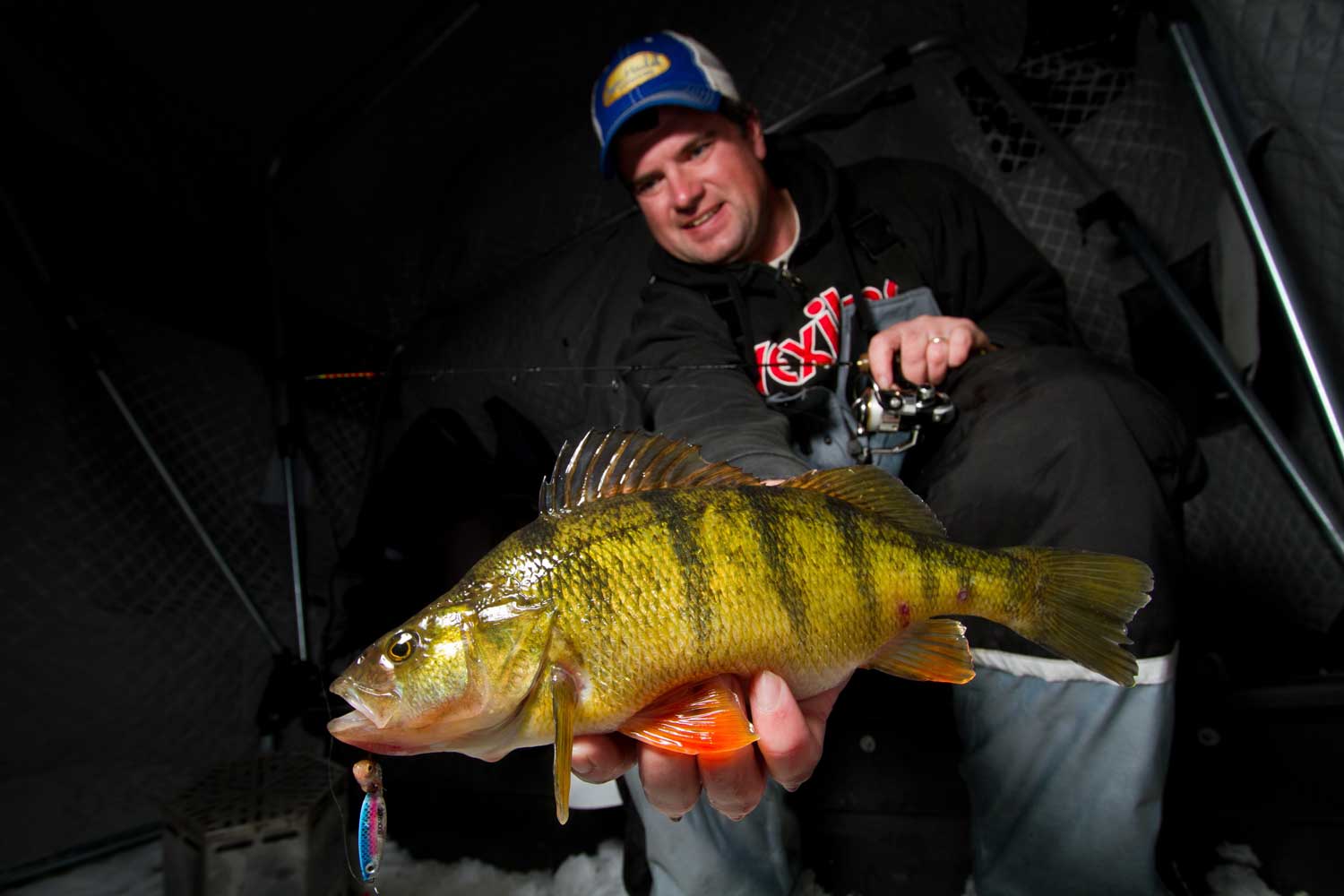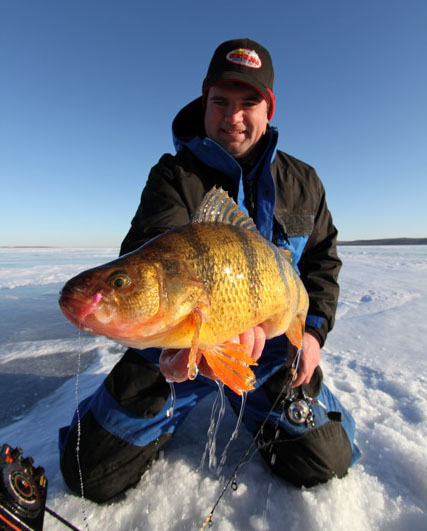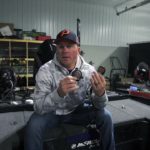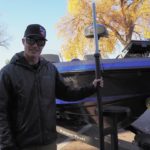Dead Sticking Revised
 In a perfect world, we would always be able to fish for fish that make us look good. Fish that burn up to the presentation and rise to meet and greet you. Fish that are looking for a meal and want to eat. So often with fishing, we are dealt our hand of cards however and there are times when we have to react and make adjustments to what the fish are giving us.
In a perfect world, we would always be able to fish for fish that make us look good. Fish that burn up to the presentation and rise to meet and greet you. Fish that are looking for a meal and want to eat. So often with fishing, we are dealt our hand of cards however and there are times when we have to react and make adjustments to what the fish are giving us.
Massive cold fronts and other factors can shut the activity of fish down. Lop sided forage bases that offer endless forage options can also create tough winter bites. There are many situations where the fish are the exact opposite of aggressive. There are times when moving the bait aggressively causes fish to flee the other direction. When fish are turned off and won’t respond to aggressive presentations, we either have to make some adjustments as anglers or really struggle.
Often, tough fishing can often coincide with tough weather. When conditions are tough, one strategy that is consistent is to find a large school of fish and sit over them with patience and diligence. For perch and walleyes, dead rods really come into play when fish just don’t want to eat.
One Two Punch
The classic one two punch for both perch, crappie and walleyes is to jig a rod and then have a dead rod situated right next door. On tougher bites, the fish might still be attracted to the jigged lure but instead refer to the lonely struggling minnow nearby. Some days, some of the fish come on the more aggressively jigged lure while other fish take the minnow. By having multiple rods down, you give the fish a few options and have more lines in the water. On the toughest bites, you will usually catch more fish by having more lines down. There are times however when I don’t jig any lures and use all dead rods when the fish are really difficult. You can usually monitor just how tough the fishing situation is by either using an underwater camera or really understanding your sonar. When you see fish bolting when you raise the lure or refusing to investigate the lure, play the dead rod game.
I have to first admit that staring at multiple rod tips without holding a rod is not my favorite way to fish. I like to hold a rod and jig a lure, knowing what I am doing to that lure results in me catching a fish. Staring at dead rods is for people who like to play cards or drink beer while they fish. That is not me. There are times however when dead rods shine and discussion on using dead rods deserves merit. Like anything, there is an art to fishing dead rods effectively and there are details that can mean the difference between scratching out several fish under tough conditions and catching few fish. Here are a few adjustments I have found over the years that have made a marked and significant increase in my success when I have to resort to letting the minnow do the work.
Rod Position
It seems like whatever rod you are holding is not the rod the fish bite so I have had much more success laying out dead rods around me where I can reach them without taking a step. I drill my holes as far apart as possible within the footprint of my shelter or from where I am sitting and use long rods. The two piece forty eight inch Meat Stick rod in our Jason Mitchell Elite Series line up is perfect if you want to set up some additional dead rods near you.
You can use a tip down or even lay the rod over a five gallon pail. When a fish hits the minnow, the rod tip will dunk. I more or less have the most success when I put my hands in my pockets and watch each rod tip like a hawk. When I rod tip dunks, I can grab the rod quickly and set the hook or let the fish have the minnow longer. I personally have a much higher batting average if I use the rod tip versus using a bobber or float. When running multiple dead rods, nothing beats a hub style shelter because you have so much more room to work where you can spread out rods and heat the area so that lines and holes don’t freeze when dealing with the toughest bites.
Do Not Swing
When a fish does dunk the rod tip, I hook up with more fish if I don’t swing to set the hook at the fish. Don’t give the fish a traditional hook set, instead lift up the rod to load the rod and crank on the reel. This smooth solid connection just seems to hook up more fish. I also feel that I hook more fish if I use the lightest line I can get away with, often using four pound monofilament for perch and six pound monofilament for walleye.
 The Pendulum
The Pendulum
I have experimented with small jigs, plain hooks and split shot, small treble hooks and just about every other rig to use below a dead rod but I have settled on a program that works the best most of the time for the toughest bites. When dealing with a tough bite, the smaller minnows often work the best and the best system I have found for both walleye and perch is to modify either a Buckshot Rattle Spoon or Forage Minnow by replacing the treble hook with a long shank Aberdeen hook, usually about a number four or six size.
Hook the minnow through the hide right behind the gill so that the hook faces towards the head of the minnow. This spoon and minnow combination does a few things on a really tough bite. First off, the minnow can’t go anywhere or swim to get away. The long shank hook swings into the mouth of the fish much easier without the fish having to move much water. By hooking the minnow near the head and facing forward, the fish will typically have the hook in the mouth even when they just grab on to the head of the minnow and hold the minnow in the mouth while the tail hangs out.
On really tough bites where the fish are very negative, I have watched over and over with an underwater camera where fish would just grab onto the head of the minnow and hold for a long time while the tail of the minnow hangs out of the fish and flaps. When fish are more aggressive, they swallow the whole minnow or take a second gulp to suck in the whole minnow but when things are tough, you don’t get that and this presentation connects. This allows you to set the hook as soon as the rod dunks and you don’t have to guess so much as to how long to wait before setting the hook.
Running Traffic
Dead rods will only work however if you have traffic below you. Rolling up your sleeves and camping out over a spot won’t do you any good if there are no fish below you. You still have to find that zone where there are fish moving back and forth. On a tough bite, I will sit over a spot if I am getting some kind of activity every hour. On tough bites, one of the most important tools for making good decisions is a watch.
It can be easy to become too impatient and move too much but it can also be easy to get lulled into a spot for way too long. By watching the clock, you can easier manage your time and make better decisions. On tough bites, you can still scratch out a decent day on the ice if you manage your time and make the proper adjustments.
We all hope for days where the fish are stacked up below us and snapping but the reality is that does not and will not happen every day. When conditions get difficult and fishing gets difficult, you can still scratch out a respectable day on the ice.





